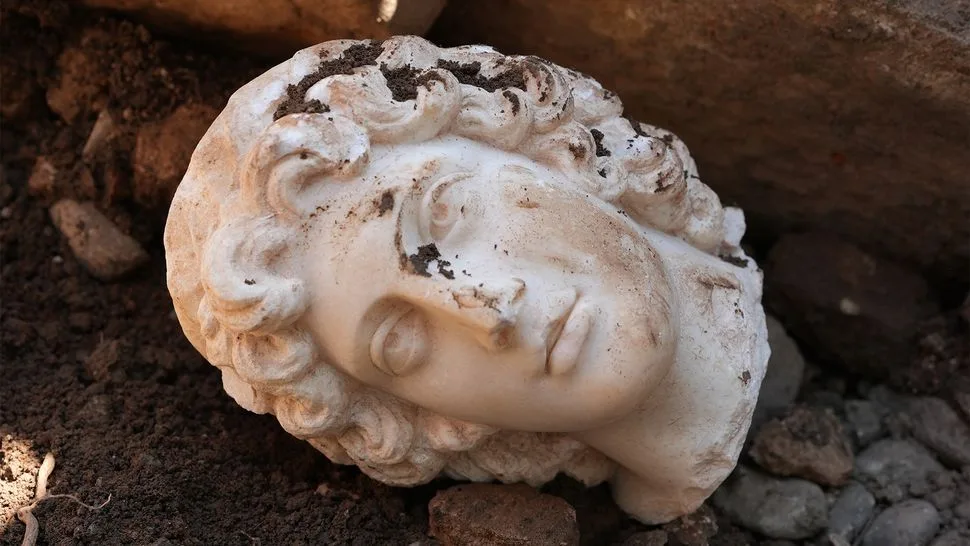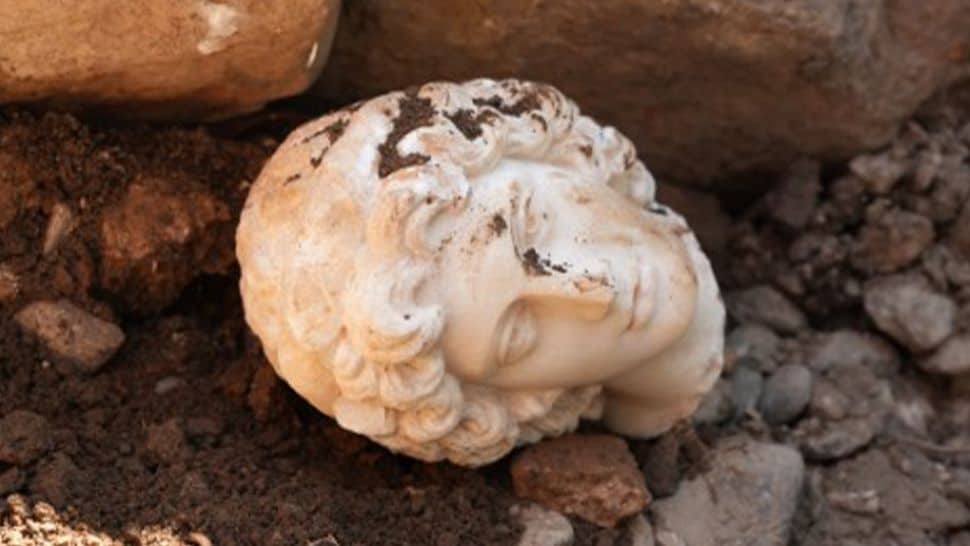A remarkable discovery in Turkey has unveiled a marble head of Alexander the Great, the renowned ancient ruler, with a distinctive lion's mane hairstyle. This finding has shed light on the enduring popularity of the historical figure, even hundreds of years after his demise.
The head of this marble statue was unearthed amidst the ruins of a Roman-era theatre in Konuralp, near the city of Düzce, located on Turkey's northwest coast. Experts estimate that the statue dates back to the second century, more than 400 years after Alexander the Great's death in 323 B.C.
Notably, alongside this statue head, the remains of other marble sculptures, including depictions of the Greek god Apollo and the mythical creature Medusa, were also discovered in the theatre ruins, as reported by the Düzce Municipality.
Historian Paul Cartledge, a professor at the University of Cambridge and an expert on Alexander the Great, explained that the ancient ruler's enduring popularity stemmed from the fact that his successors portrayed him as an exemplary leader they aspired to emulate. Those vying for his throne and empire often used Alexander's name and praised his achievements to legitimise their rule.
Additionally, it became a common practice for later rulers to mint coins bearing Alexander's image as a means of legitimising their reigns. This further contributed to the perpetuation of his legacy.
The hairstyle, featuring two tufts of hair on the forehead, separated to the back and sides, is unique to Alexander.
The distinctive features of the marble head, such as its lion's mane hairstyle and upward-looking eyes, convinced historical experts that it represents Alexander the Great. The Düzce Municipality noted that the hairstyle, featuring two tufts of hair on the forehead, separated to the back and sides, is unique to Alexander. The statue depicts him with deep-set eyes and a slightly open mouth.

Alexander the Great, born in 356 B.C., was a king of the ancient Greek kingdom of Macedon. He rose to power in 336 B.C and his military conquests, culminated in his victory over the formidable Persian Empire between 334 B.C. and 331 B.C.
At its zenith, Alexander's empire spanned from Greece and Egypt to Bactria (present-day Afghanistan) and the Punjab (present-day Pakistan). After his army's refusal to proceed further, Alexander returned to Babylon, where he passed away, possibly due to illness, excessive drinking, or poisoning.
Even under the Roman Empire's rule, which extended over regions like Bithynia where the statue was found, Alexander the Great continued to be revered as an exemplary ruler. His influence was profound, with Roman emperors emulating his clean-shaven appearance as opposed to the traditional bearded look of past rulers. This shift in fashion was influenced by Alexander's desire to resemble the Greek god Apollo, who was depicted without facial hair. Consequently, many statues of Alexander, including the one discovered in Konuralp, feature upward-looking eyes, symbolising his connection to the divine.

Read also Draft Law on Tax Evasion: What to Expect in Parliament this October
